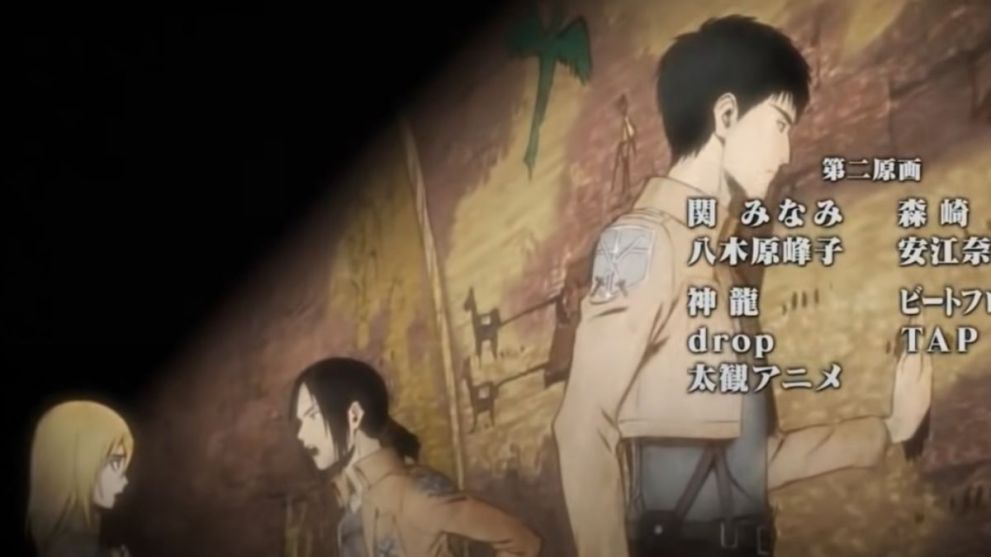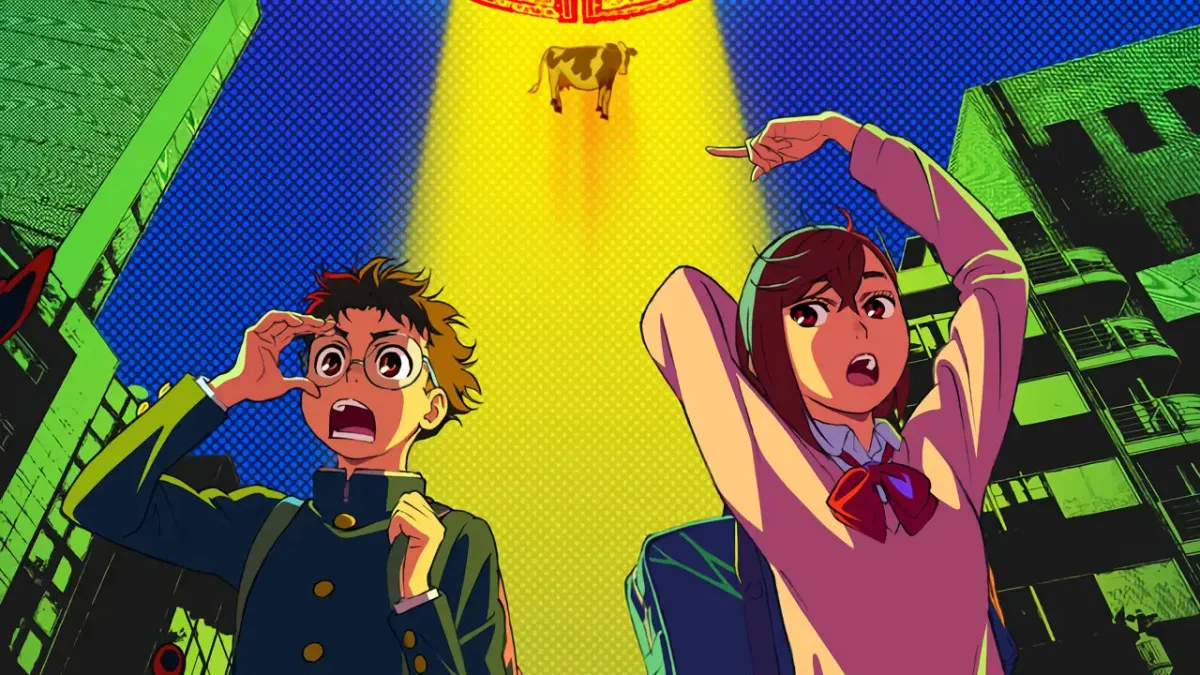Attack on Titan has made a name for itself through the amount of detail that is packed into every scene, and its opening themes and ending credits each season are no exception. This has caused the show to be widely recognized for its masterful foreshadowing, with small hints displaying hugely significant details that would hint at key moments in the story much further down the line.
Now that Attack on Titan has finally wrapped up for good, I found myself revisiting some of my favorite opening and ending credits throughout the series, and I was drawn back to my old favorite ending credits, ED2, otherwise known as Great Escape.
This ending credits sequence had always portrayed some very strong foreshadowing regarding the characters. However, upon further evaluation, there are so many minor details that were missed by myself and many others during the first couple of seasons.
Now that the show has concluded, these details hit so much harder than anyone could have ever imagined. Let’s take a look at all these tiny, intricate elements and incredible foreshadowing that are included in this sequence, making it an absolute masterpiece.
The Wall That Divides the Characters

The most obvious foreshadowing in ED2 Great Escape is the use of a wall to position characters, giving a massive indicator of the true nature of these individuals and the dark secrets they hide.
On the inner side of the wall, the camera pans across Eren, Mikasa, Armin, Sasha, Connie, and Jean. These are all characters who have pure intentions, and nothing to hide regarding their origins or background; and, most notably, grew up within the walls.
Then, the camera flips and pans across the outer side of the wall, scrolling past Annie, Reiner, Bertholdt, Ymir, and Historia. These are all characters who turned out to have secrets regarding their past, withholding their true intentions or backgrounds from their comrades.
This was a huge indicator of the revelations that were to come, hinting that Annie is the Female Titan, Reiner is the Armored Titan, Betholdt is the Colossal Titan, Ymir is the Jaws Titan and had ties to the cult of Ymir, and Historia is a descendant of the royal bloodline.
Of course, these are all characters who have ties to Marley through these secrets, which is why they’re placed on the outer wall; we just didn’t know it at the time.
The Paintings on the Wall

While the wall was already making a statement regarding the allegiance and secrets of certain characters, there is much more to admire behind the beloved cast.
The walls themselves are decorated with a series of paintings, which are easy enough to overlook at first glance. However, upon closer examination, these paintings tell a tale of everything that has occurred and is to come in the Attack on Titan timeline.
The ‘front’ side of the wall showcases the past events of Attack on Titan, starting with the retreat and building of the three walls. Behind Eren and Mikasa shows ships arriving at Paradis and the walls being built.
This very likely indicates the arrival of King Fritz’s loyal followers, whom he moved from the Eldian Empire to Paradis following its collapse and then proceeded to build the walls. Then, behind Sasha and Armin, the paintings depict the land of Marley across the ocean, with Titans roaming this land. This is a massive indicator of the truth behind the Mindless Titans, and just how they are created.
As the camera flips to the outer side of the wall with the comrades who are hiding secrets, the paintings on the wall now tell the story of the future to come. Behind Annie, there is a clear indicator of a wall as well as people inside wearing green. Likely, the wall shown behind Annie is also Wall Rose, where humanity was forced to retreat following the fall of Wall Maria.
Outside of this wall, the humans wearing green are shown flying in the air and riding horses while attacking Titans. This is a clear indicator of the Scouts and their current fight for humanity against the Titans that roam Wall Maria, battling to reclaim the land. Lastly, behind Ymir and Historia, there is another wall. Behind this one, the Scouts are shown but with no Titans nearby. This foreshadows the end of Attack on Titan, in which humanity survives and outlives the threat of Titans.
The ‘Walnut’ / Seed

Throughout this ED, there are scenes of a small, round object being dropped and rolling by both the past and future.
At the time of the anime in which Great Escape was freshly released, this was presumed by many fans to just be an odd little walnut, perhaps signifying the toughness of the situation the characters are facing. However, upon further reflection as the show progresses, it is much more likely that this is not a walnut but instead a tree seed, as trees are highly significant symbols in Attack on Titan.
The first piece of evidence to point in this direction is that the person who drops this seed at the beginning of the credits appears to be Ymir Fritz, the original Founding Titan. Ymir obtained the Titan powers from a mysterious tree, so a seed linking the past and futures of the characters and the Founding Titan makes a lot of sense here.
The seed also appears to continue rolling before a flash of very horrific, red and black blurred images pop up. These show body parts, animals, and people dying. This possibly foreshadows the events of the Rumbling led by Eren, who is another wielder of the Founding Titan power.
Eren Puppet Symbolism & Titan Powers Foreshadowing

Another interesting scene captures human Eren seemingly unconscious and being held up by masses of muscle like that which connects to a Titan.
While this panel does indeed flip into his Titan form at the time, there is much more significance to this pose than what one may have assumed at the time the ED was relevant. In this scene, Eren is almost depicted as a puppet. This is somewhat true in his younger self being a puppet to his older self the whole time, due to the power of the Attack Titan enabling him access to all memories of his past and future, as well as the past and future memories of previous and future Attack Titan holders.
Furthermore, Eren being unconscious here is also possibly a parallel to Chapter 139. Eren is a puppet for Ymir’s destiny, having been influenced by her from Chapter 1 with intentions of him saving her from thousands of years of slavery.
Mikasa & The Mantis

Lastly, one of the most interesting symbols and bits of foreshadowing seen in Great Escape is this quick scene of Mikasa, in which a mantis is seen painted on the rocks behind her.
At the time that this ending credits aired, this was presumed by fans to have just been a link to a scene from her memories, in which she witnessed a mantis eating a moth. However, this also has a much deeper meaning after the conclusion of Attack on Titan, as female mantises are a species known for decapitating the heads of their partners.
While Mikasa and Eren’s romance was always subtle and not even explicitly confirmed, there have always been indicators that they have feelings for one another. Keeping this in mind, the fact that Mikasa was the one to finally kill Eren — and the fact that she did so by cutting off his head — makes this symbolism and foreshadowing even stronger, even if it wasn’t intentional at the time.
It truly is impressive just how much of the story was hinted at in advance, and that’s part of the reason why Attack on Titan is fascinating to dive back into following the finale. Once again, Attack on Titan has proven to fans that it will forever and always be an absolute master in forshadowing.












Updated: Nov 13, 2023 10:16 am